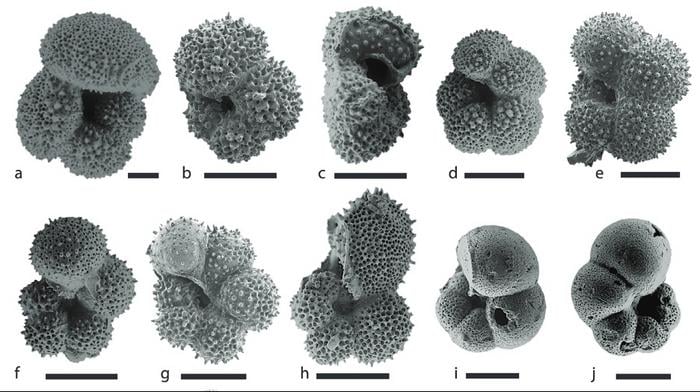A UC Riverside study has shed light on how the ocean’s response to global warming may not be entirely unknown territory.
By analyzing tiny, fossilized shells recovered from ancient deep-sea sediments, researchers have demonstrated how episodes of extreme heat in Earth’s past caused the exchange of waters from the surface to the deep ocean to decline, affecting the “global conveyor belt” that redistributes heat around the globe and makes large portions of the planet habitable.
The study, published in the Proceedings of the National Academy of Sciences, focuses on the early Eocene epoch, between roughly 49 and 53 million years ago, when Earth was much warmer than today and experienced spikes in CO2 and temperature called hyperthermals. These conditions resemble those predicted by the end of this century if significant action is not taken to reduce carbon emissions.
Oceans’ Crucial Role in Regulating Earth’s Climate
Oceans play a vital role in regulating Earth’s climate by moving warm water from the equator toward the north and south poles, balancing the planet’s temperatures. Without this circulation system, the tropics would be much hotter and the poles much colder, and changes in this system are linked to significant and abrupt climate change.
Furthermore, the oceans serve a critical role in removing anthropogenic carbon dioxide from the atmosphere. “The oceans are by far the largest standing pool of carbon on Earth’s surface today,” said Sandra Kirtland Turner, vice-chair of UCR’s Department of Earth and Planetary Sciences and first author of the study. “Today, the oceans contain nearly 40,000 billion tons of carbon — more than 40 times the amount of carbon in the atmosphere. Oceans also take up about a quarter of anthropogenic CO2 emissions. If ocean circulation slows, absorption of carbon into the ocean may also slow, amplifying the amount of CO2 that stays in the atmosphere.”
Reconstructing Deep Ocean Circulation Patterns Using Fossil Shells
To better predict how ocean circulation responds to greenhouse gas-driven global warming, the research team analyzed tiny fossil shells from different sea floor locations around the globe. These shells, from microorganisms called foraminifera, are about the size of a period at the end of a sentence and can be found living throughout the world’s oceans, both on the surface and on the sea floor.
“As the creatures are building their shells, they incorporate elements from the oceans, and we can measure the differences in the chemistry of these shells to broadly reconstruct information about ancient ocean temperatures and circulation patterns,” Kirtland Turner said.
The researchers examined oxygen and carbon isotopes in the shells to reconstruct patterns of deep ocean water movement. Oxygen isotopes indicate temperatures in the water the organisms grew in and the amount of ice on the planet at the time, while carbon isotopes reflect the age of the water where the shells were collected, or how long water has been isolated from the ocean surface.
The team also used computer climate models to simulate the ancient ocean’s response to warming and then used the foraminifera shell analysis to help test results from their climate models.
During the Eocene, there were about 1,000 parts per million (ppm) of carbon dioxide in the atmosphere, contributing to that era’s high temperatures. Today, the atmosphere holds about 425 ppm, but if current emission levels continue, similar conditions to the Early Eocene could occur by the end of this century.
Therefore, Kirtland Turner argues it is imperative to make every effort to reduce emissions. “It’s not an all-or-nothing situation,” she said. “Every incremental bit of change is important when it comes to carbon emissions. Even small reductions of CO2 correlate to less impacts, less loss of life, and less change to the natural world.”


